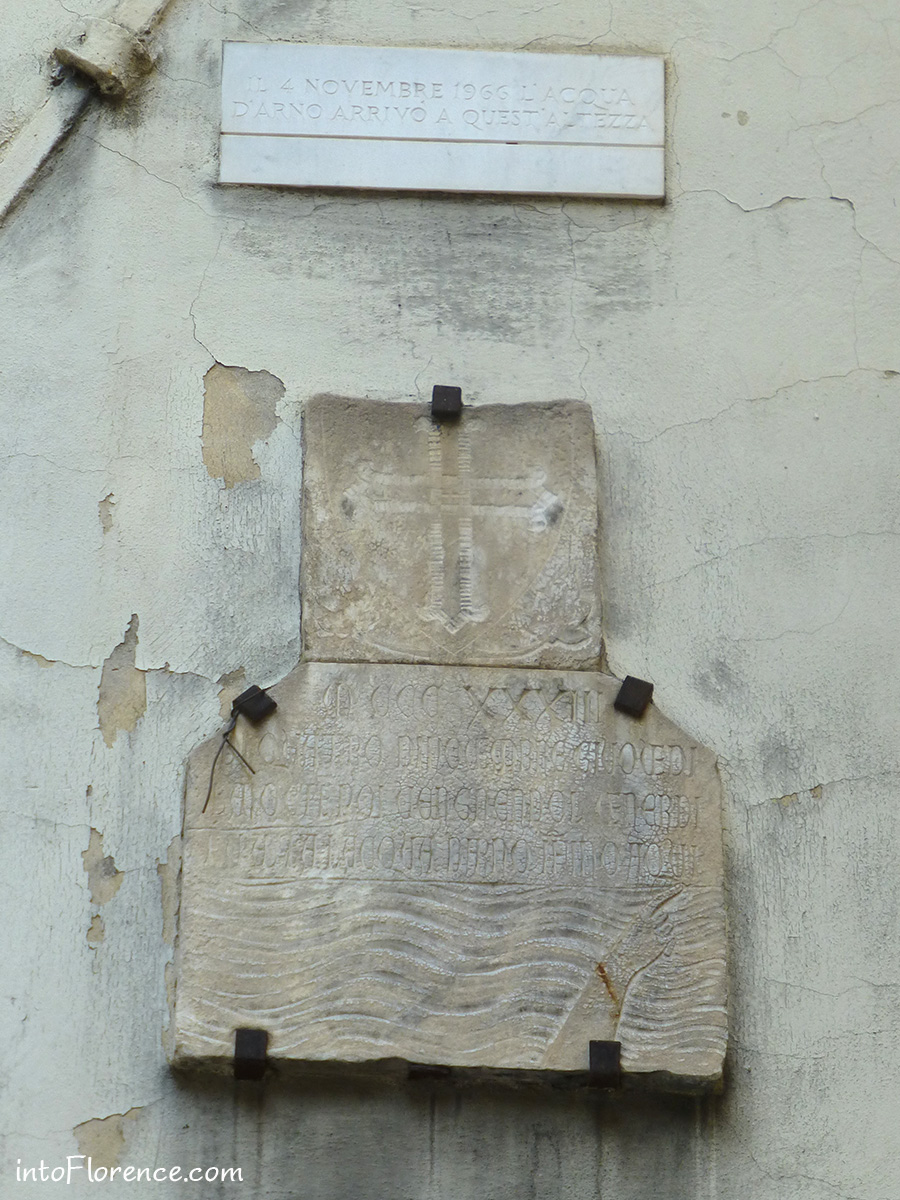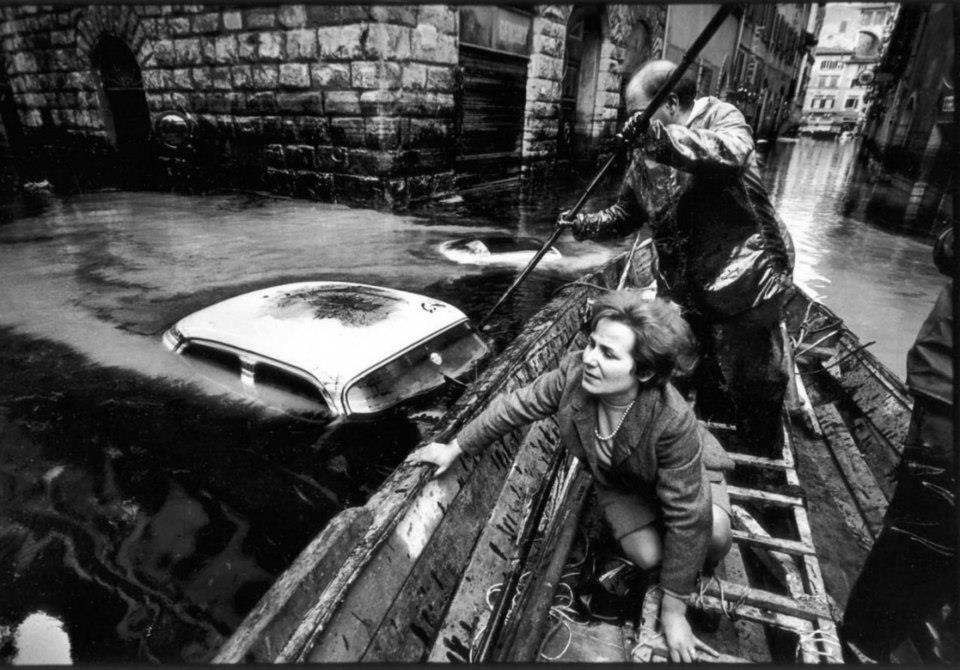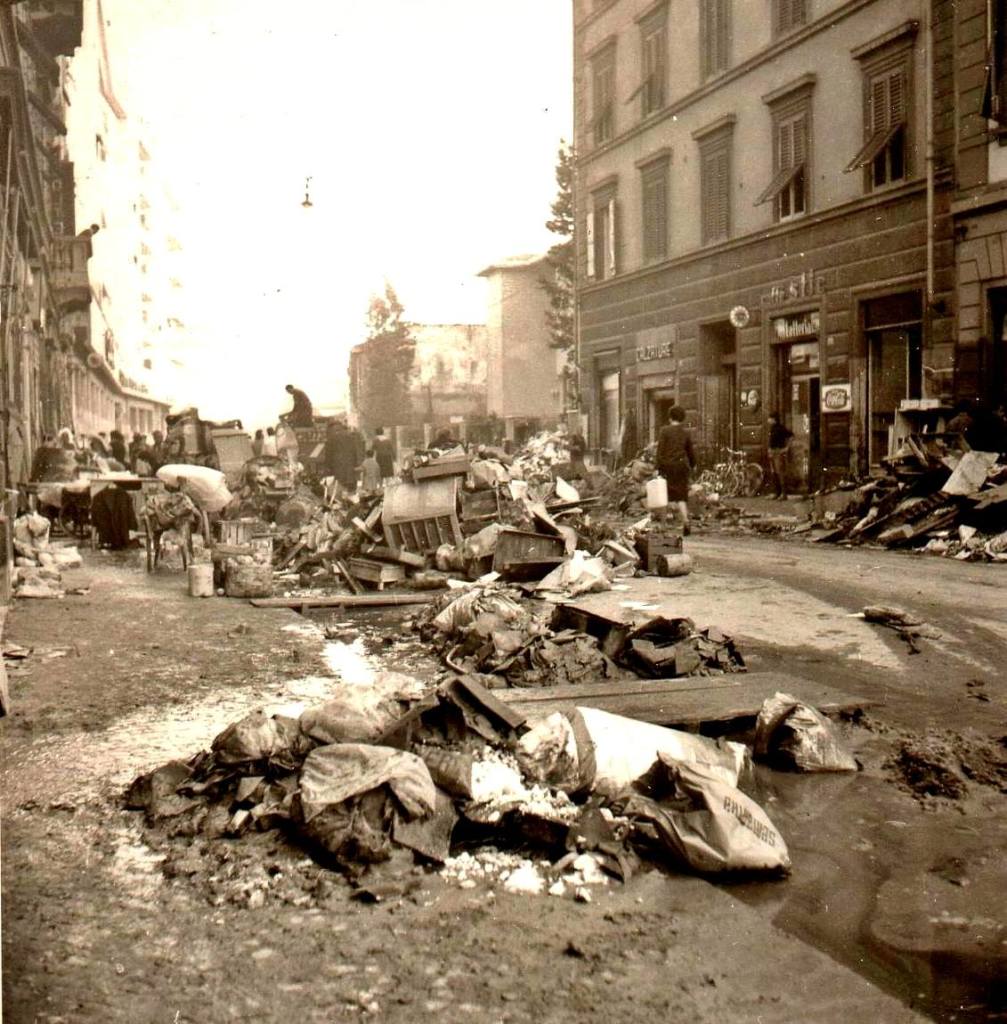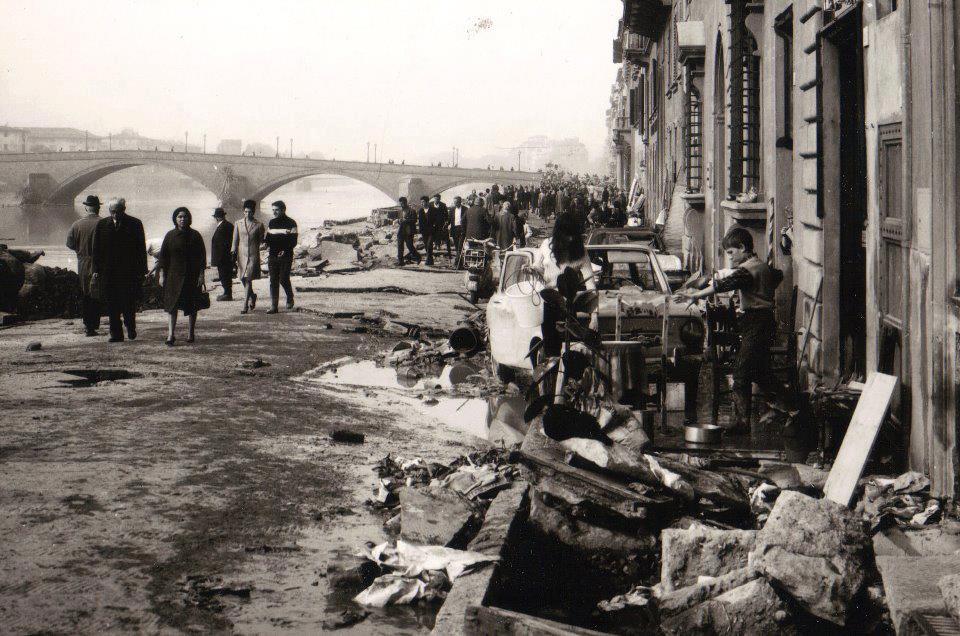Today, November 4th, it is exactly 48 years ago that a flood hit Florence that submerged the city under several meters of water and claimed the lives of 101 people.
It wasn’t the first time that the river Arno overflowed its banks and inundated Florence, since the Middle Ages another 3 devastating floods hit the city, but never before that disastrous night of 1966 had the water reached a height of 6 meters (19’ 7”).
Yet the most recent flooding is not known as the greatest catastrophe in Florentine history, that spot is reserved for the flooding of November 4, 1333 when even the Ponte Vecchio was washed away.
Yes, spotted correctly, again November 4th. The biggest floods in Florence took place on November 4, 1333, September 13, 1557, November 3, 1844 and November 4, 1966. Spread throughout the city you can find markers that indicate the height of the water level.
On the corner of Piazza Santa Croce there are 2 markers, one for the flood of 1557 and one for the 1966 flood.
In Via San Remigio the difference between the floods of 1333 and 1966 is marked.
What exactly happened in that fatal night of November 4, 1966? The main events at a glance.
November 3, 1966
For days it has rained continuously in Florence and the rising water level of the Arno and the smaller rivers in the area is being closely monitored. Yet no one is really worried about these autumn showers, heavy rain is not uncommon this time of year. In the afternoon a wicked thunderstorm with strong winds passes over the city, raising the water even more. The government in Rome tries to avoid panic and urges the population to remain calm and the preparations for the national holiday on November 4th continue as if nothing is wrong or could go wrong.
While the cinema shows The Bible by John Huston with impressive scenes of a flood of biblical proportions, outside the temperature increases unexpectedly with 5 degrees Celsius, melting the snow that had fallen earlier that day in the northeast of Florence (Casentino en Mugello). At 10pm the first reports of floodings start to come in from those areas. At midnight the entire area of Montevarchi, Figline Valdarno, Pontassieve and Compiobbi has been flooded.
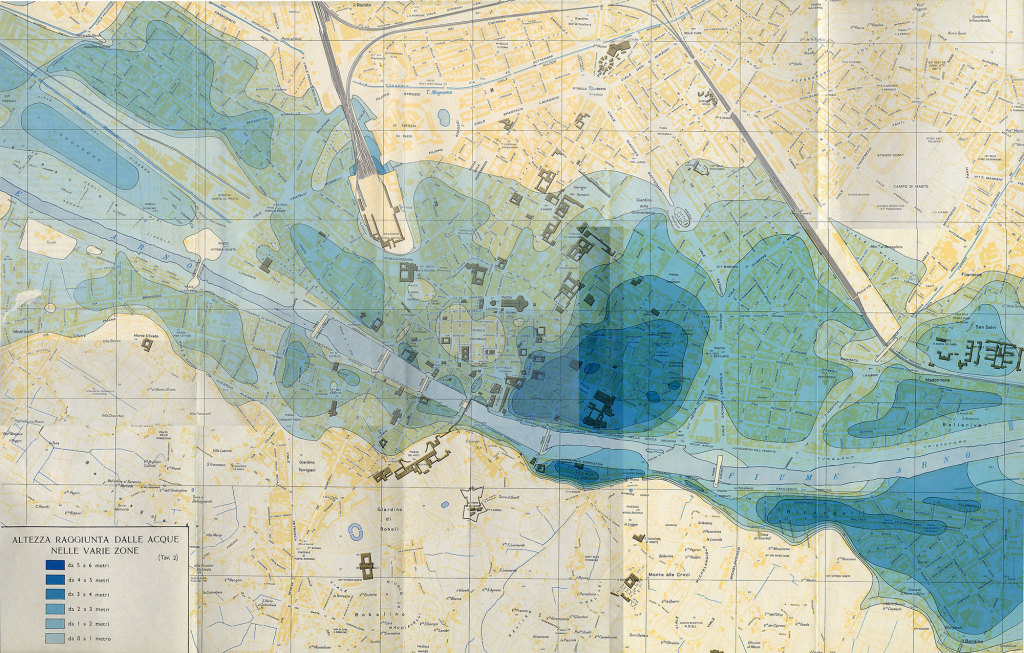
November 4, 1966
With devastating power the water continues to flow west. At 1am a team of experts, including the mayor, are watching the Arno in the center of Florence. They contemplate raising the alarm by ringing all the church bells in town, but fearing they will create unnecessary panic they decide against it.
One hour later the banks of the Mugnone, a tributary of the Arno, overflow and inundate the racetracks and the zoo causing the death of 70 horses and a dromedary. The sewers collapse under the water pressure and the quarters of Oltrarno, Gavinana and Santa Croce start to flood, followed by San Niccolò, Santo Spirito, San Frediano, Isolotto and Soffiano.
Because no alarm was raised and no precautions were taken, the city is defenseless against the power of so much water.
Thousands of irreplaceable books and manuscripts are lost when the National Library, located on the banks of the Arno is hit hard. While the Arno rages through the streets of downtown Florence the jewellers on the Ponte Vecchio try to save their precious merchandise from the water that has risen to the edge of bridge.
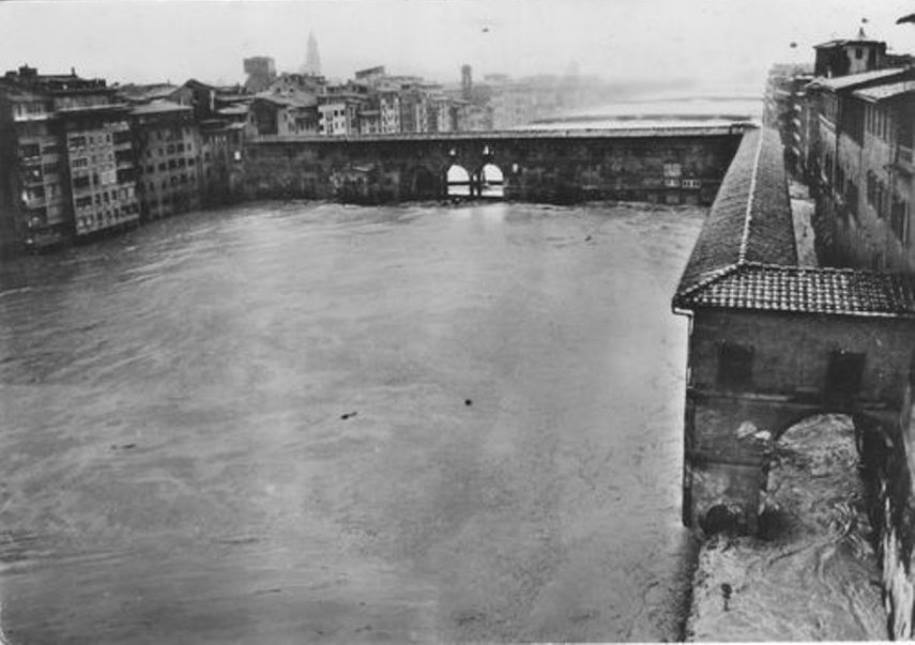
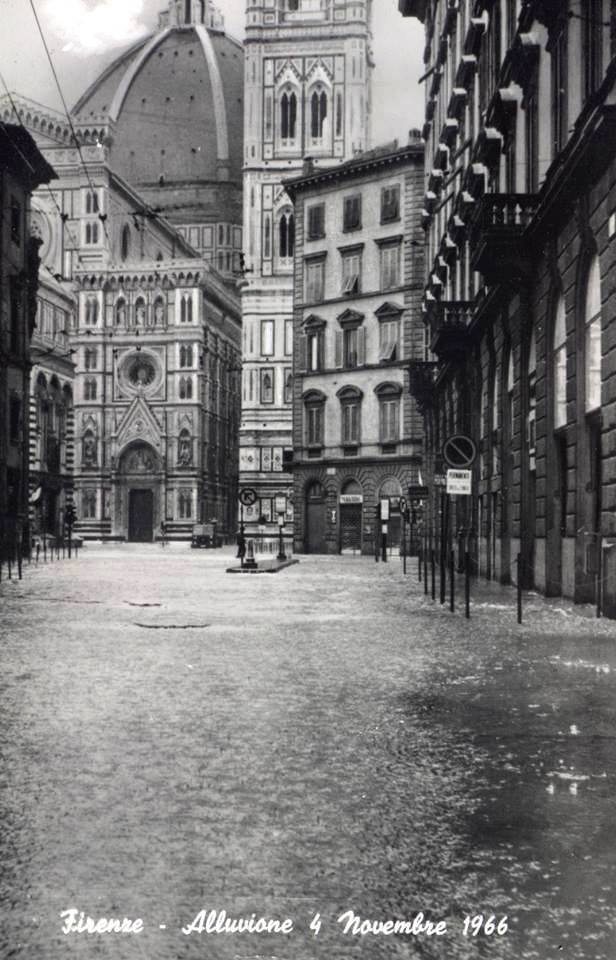
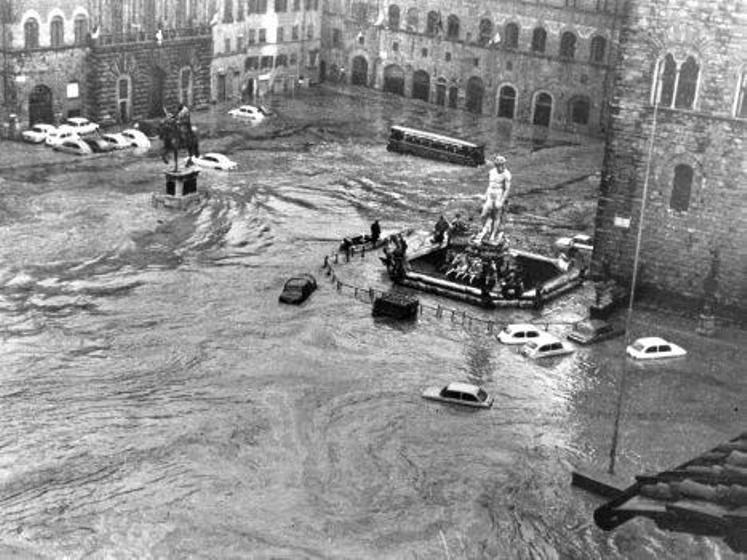
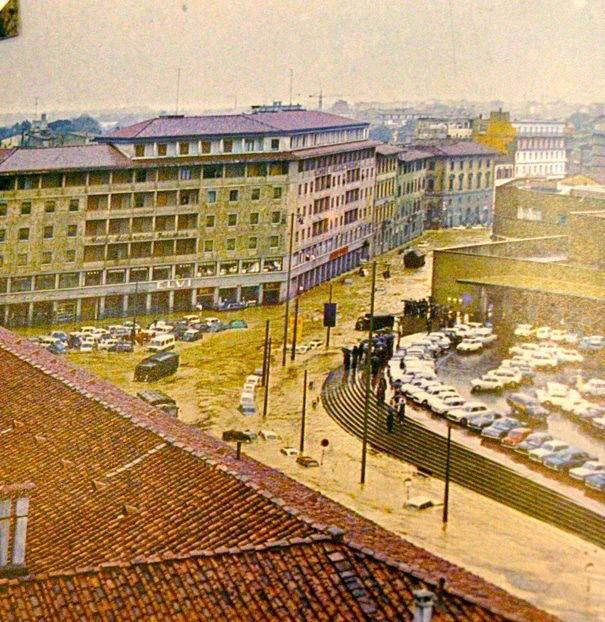
By the morning a large part of Florence and surrounding areas are under water. The population seeks refuge on rooftops and upper floors; in some places the water has reached a height of 6 meters.
Especially the Santa Croce quarter is hit ruthlessly, the water is several meters height inside the church and the crucifix of Cimabue from 1272 is damaged irretrievably.
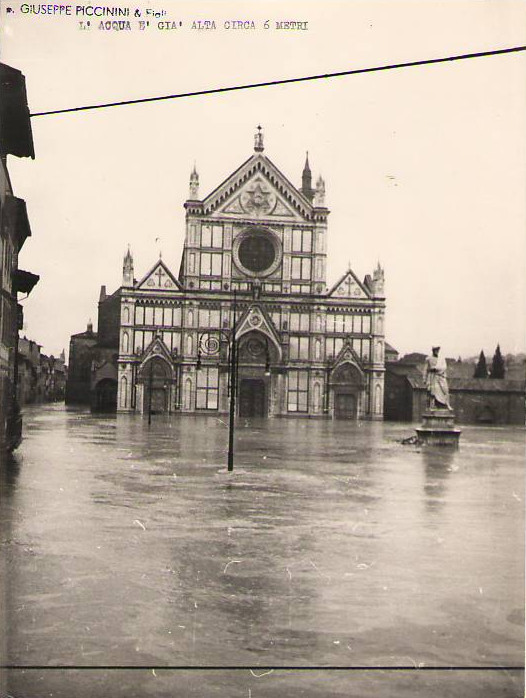
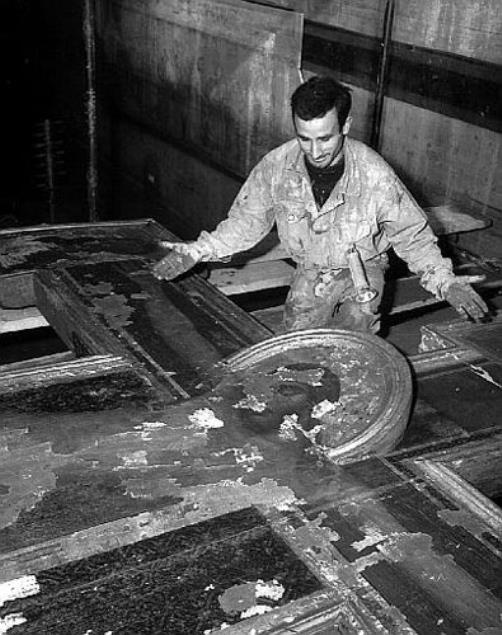
To prevent the prisoners from drowning inside the prison Le Murate the doors of their cells are opened. They find refuge with the locals and almost all of them report back to the prison when it’s safe again.
When 2 days later the water level has dropped to normal again, the enormous damage done to buildings, shops and monuments becomes apparent. A thick layer of mud of 600,000 m3 covers Florence.
Thousands of volunteers from Italy and around the world come to Florence to assist in the retrieval of books, manuscripts and artefacts. They are known as Angeli del Fango (Mud Angels) and with their hard work they have done a lot for the reconstruction of the city.
That fateful night of 1966 is still remembered every year with a special mass and a laurel wreath is dropped in the water from the Ponte alle Grazie in memory of the victims.
The below video is a compilation of unique film material of the flood.
Source historic photos: Vecchia Firenze Mia



